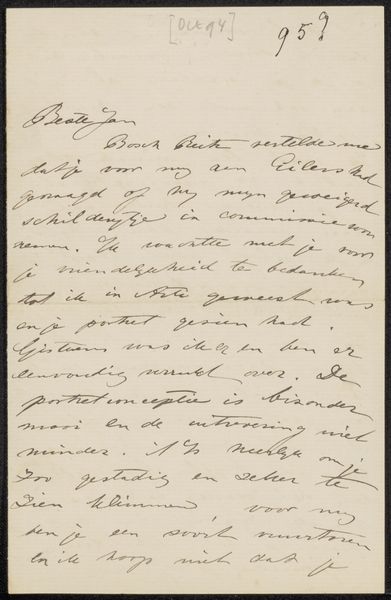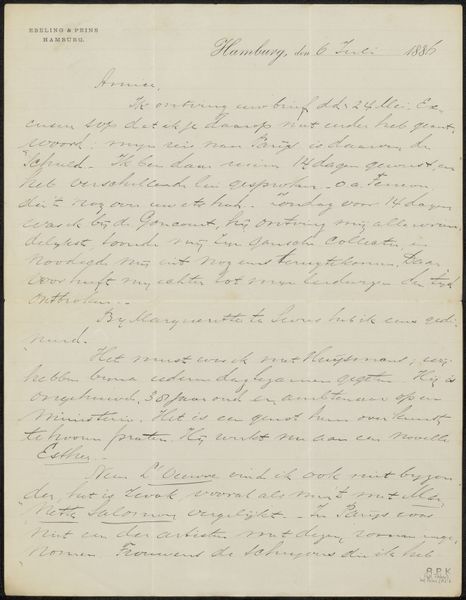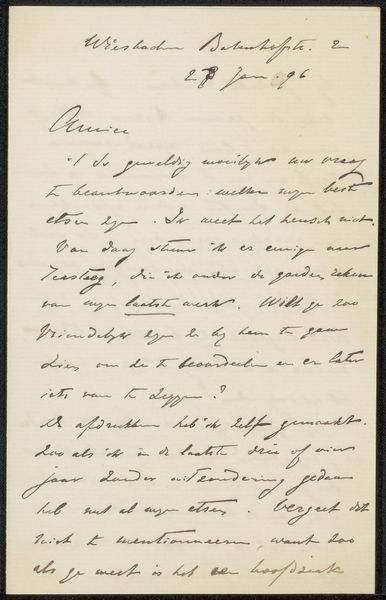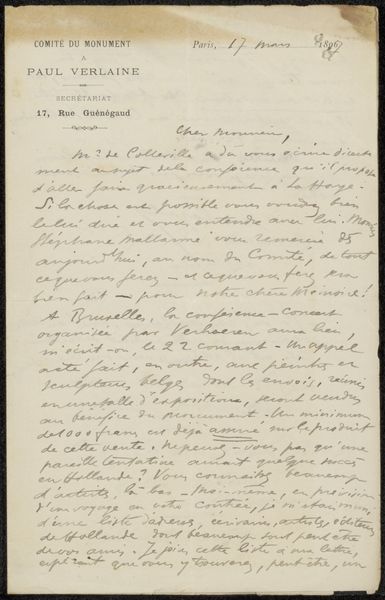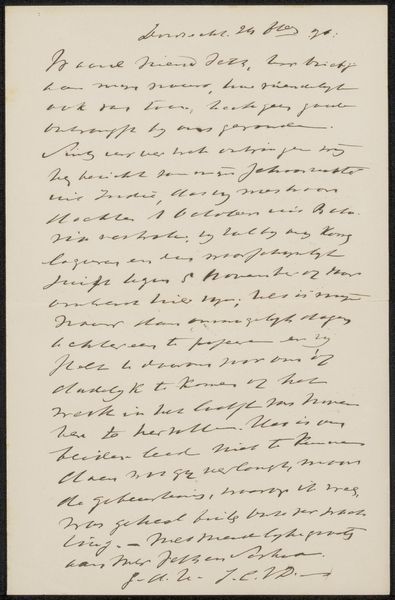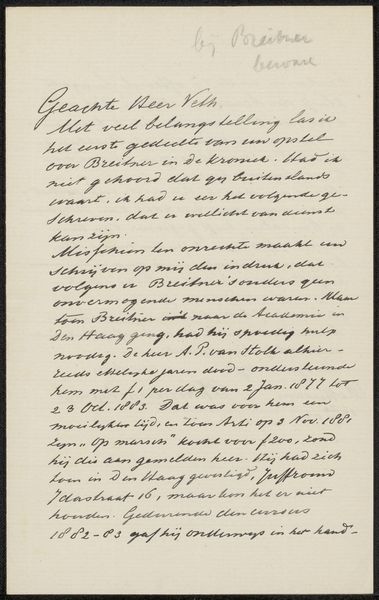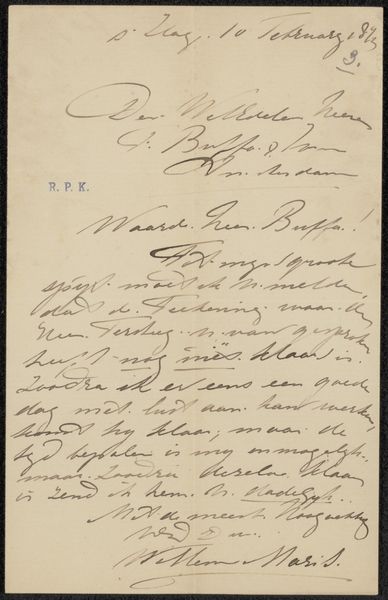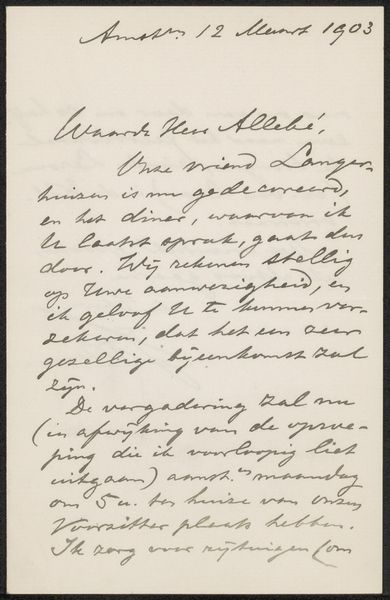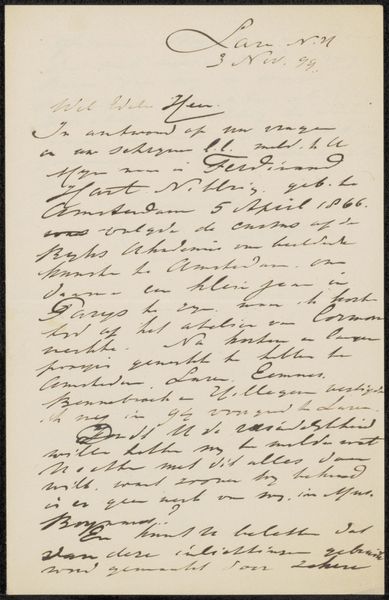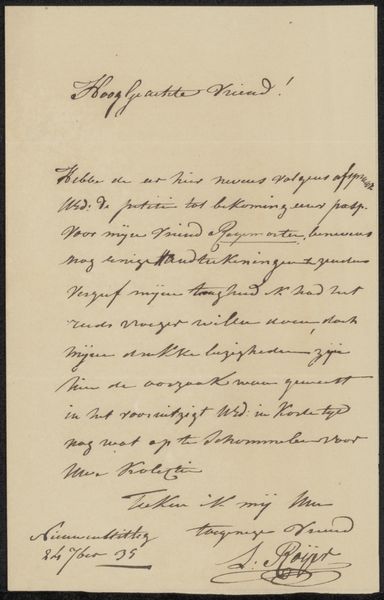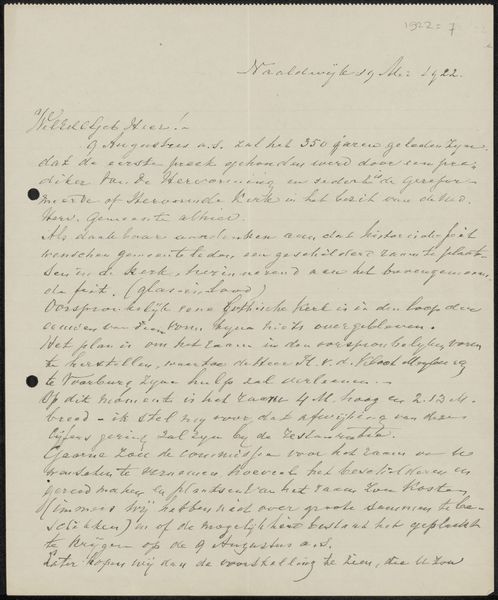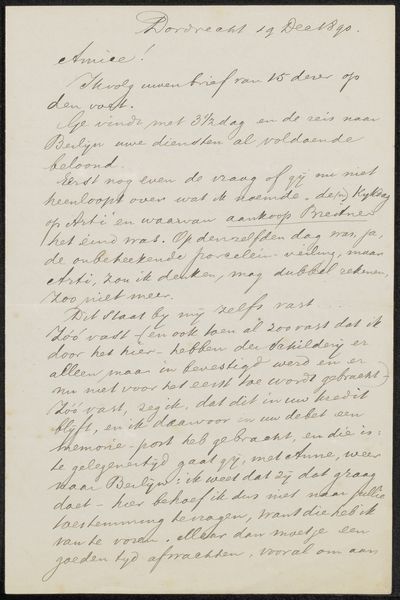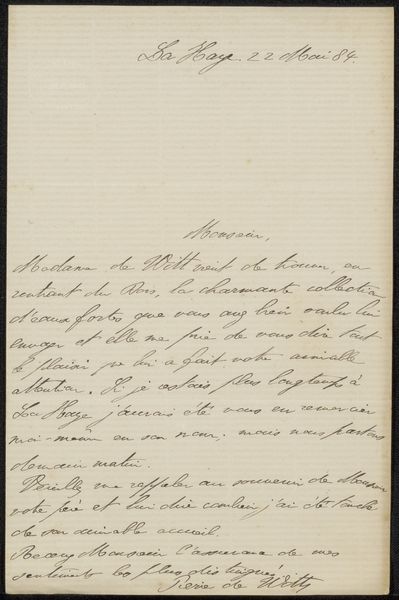
drawing, paper, ink
#
pen and ink
#
drawing
#
script typography
#
hand-lettering
#
hand drawn type
#
hand lettering
#
paper
#
ink
#
hand-drawn typeface
#
modernism
#
calligraphy
Copyright: Rijks Museum: Open Domain
Editor: This work is a letter, "Brief aan E.H. Schüler-Audretsch," possibly from 1915, held at the Rijksmuseum. It's ink on paper, with beautiful calligraphy. I'm struck by its somber mood. Given the date, I wonder if the Great War is tied into it. What stands out to you about it? Curator: Considering the historical context, it's fascinating to examine this letter as a cultural artifact. Letters were a primary form of communication, especially within artistic circles. Note the letterhead, "Frans Buffa en Zonen," clearly establishing the sender's social and professional standing, acting as art dealers for notable artists, suggesting that Schüller-Audretsch moved in important artistic circles. It signals the complex web of patronage and social networks underpinning the art world at the time. It would be worthwhile exploring if Buffa actively supported emerging talent, what it meant to be connected to this family during this period, and how institutions supported grief during wartime. How might this context change our perception? Editor: That’s really insightful, and I had missed the name at the top completely! It shows the intertwined nature of art and commerce, even in private correspondence. Do you think the letter itself could be considered a work of art, given the calligraphy? Curator: Absolutely! In a time before mass communication, handwriting held immense importance, and was even seen as revealing something about a person’s character. Furthermore, the careful penmanship suggests a level of care and respect for the recipient, reflecting the social etiquette of the era. This letter highlights how deeply ingrained social structures influenced artistic expression and reception. The First World War cast its shadow through personal grief, and these networks fostered dialogues. Editor: I hadn’t considered the level of intention, I find the historic role and how intertwined societal matters are with art so captivating. I appreciate your perspective. Curator: And I've been reminded of the human stories behind institutions and movements. Thank you.
Comments
No comments
Be the first to comment and join the conversation on the ultimate creative platform.
